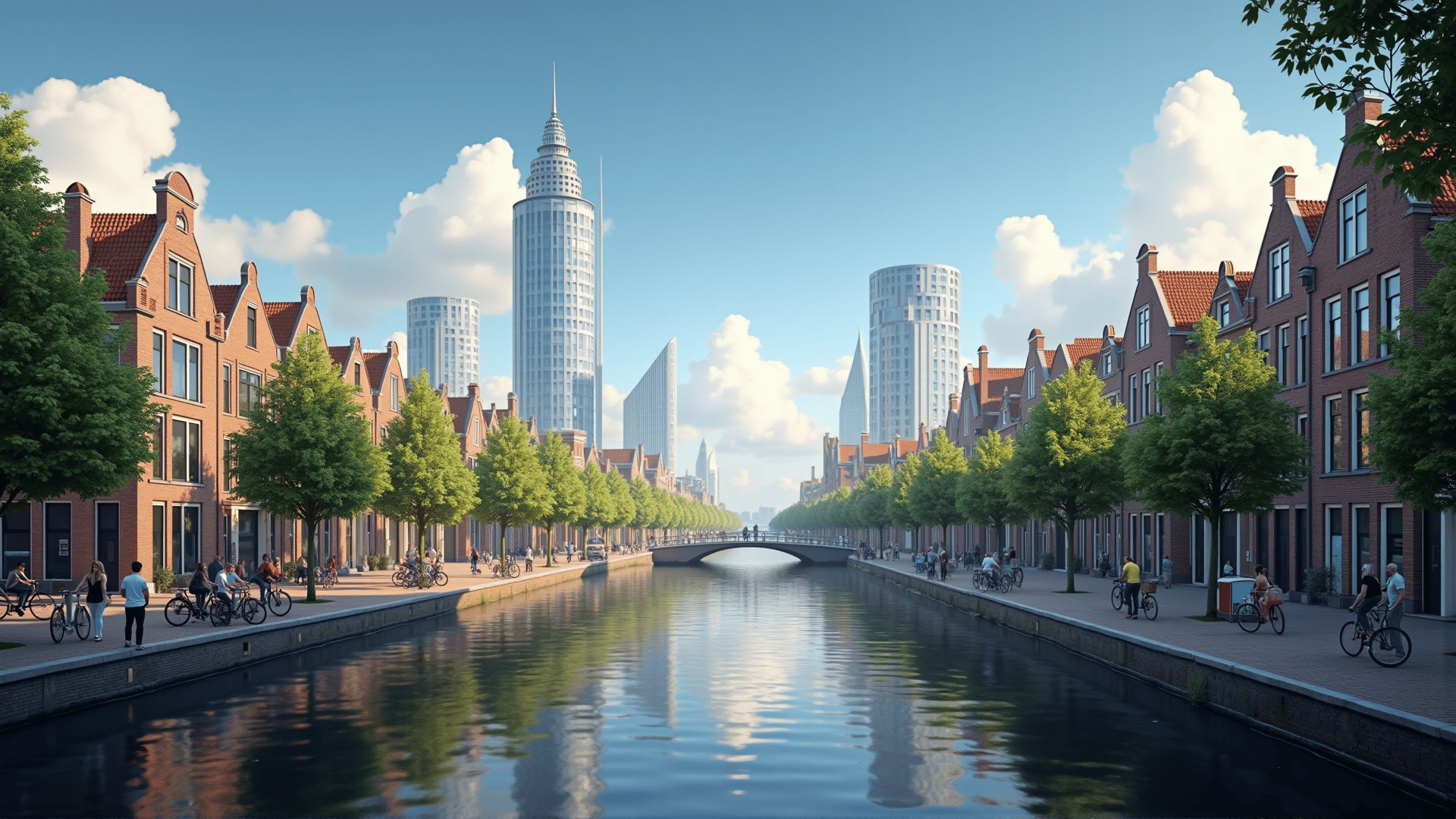The Netherlands, a country renowned for its iconic windmills, tulip fields, and canals, also boasts a rich architectural tapestry that tells the story of its history and societal evolution. From medieval castles to modern marvels, Dutch architecture has been shaped by geography, historical events, and cultural influences. This journey through the architectural styles that define the Dutch landscape reveals a history marked by innovation, resilience, and a forward-thinking approach to design and urban planning.
Medieval Beginnings and Gothic Grace
The Netherlands' architectural journey begins in the Middle Ages, with structures like the castle Muiderslot showcasing the fortified designs of early medieval architecture. As towns began to flourish, Gothic architecture took hold, especially evident in the grand churches that dot the Dutch landscape. The Utrecht's Dom Tower and the Brabantine Gothic-style St. John's Cathedral in 's-Hertogenbosch exemplify the era's fondness for towering structures and ornate embellishments, reflecting both religious devotion and burgeoning civic pride.
The Dutch Golden Age and Classicism
The 17th century marked the Dutch Golden Age, a period of immense wealth, prosperity, and artistic achievement coinciding with the classical architectural movement. This era saw the rise of Amsterdam as a financial and cultural epicenter, its canals lined with gabled townhouses and merchant homes emblematic of Dutch Renaissance architecture. Buildings like the Royal Palace of Amsterdam, originally constructed as the city hall, showcase the balance, order, and restrained ornamentation typical of Dutch classicism.
Baroque Narrative and Urban Expansion
While the Netherlands largely refrained from the excessive ornamentation seen in Baroque architecture elsewhere in Europe, the country's own interpretation can be seen in the bold and imaginative designs of the Mauritshuis in The Hague. The Baroque era in the Netherlands was more about city planning than individual buildings, with Amsterdam’s Canal Belt, constructed during this period, designed to accommodate its bustling population and growing trade needs.
Industrial Revolution and Eclecticism
The 19th century brought the industrial revolution and with it, new materials and techniques that empowered architects to experiment with diverse styles and aesthetics. Eclecticism became popular, blending elements from different historical styles and cultures. Infrastructure projects such as railway stations and bridges were undertaken with considerable flair, seen in structures like the Amsterdam Centraal railway station, which combines Gothic and Renaissance influences.
Modernism and Functional Evolution
The 20th century heralded modernism and a radical shift towards functionality and minimalism in architecture. The seminal impact of architect Gerrit Rietveld, with creations like the Rietveld Schröder House in Utrecht, highlighted a move toward simplicity, industrial materials, and a break from traditional aesthetics. The iconic De Stijl movement, rooted in abstraction and essential form, further underscored Dutch contributions to modern architecture, influencing design worldwide.
Sustainable Innovation and the Future
In the 21st century, Dutch architecture has become synonymous with sustainable innovation and cutting-edge design. Faced with unique geographical challenges, such as rising sea levels, the Netherlands has pioneered ingenious solutions, blending architecture with environmental considerations. Projects like Rotterdam's floating pavilions and Amsterdam's green roofs illustrate a commitment to environmental stewardship, while adaptive reuse projects breathe life into historical structures, marrying preservation with modern needs.
The architectural journey of the Netherlands is a narrative of adaptation, creativity, and respect for both tradition and the environment. As it continues to evolve, Dutch architecture remains a testament to the country's ability to harmonize its storied past with a visionary future, always mindful of the delicate interplay between land, water, and human ingenuity.
